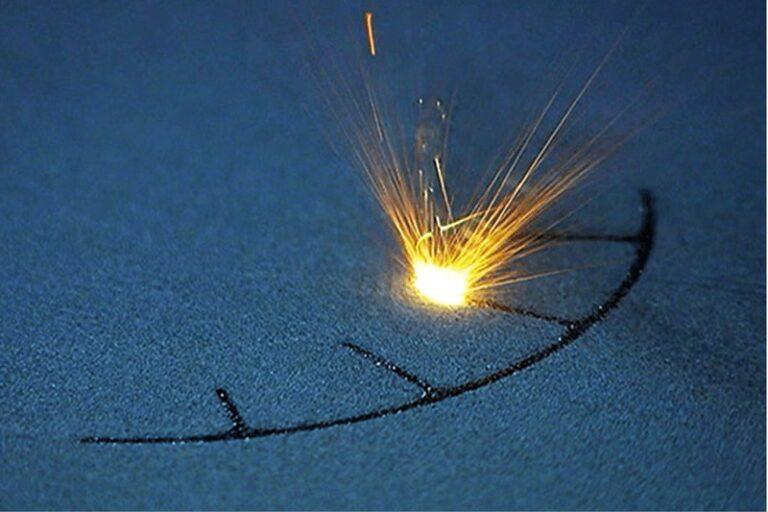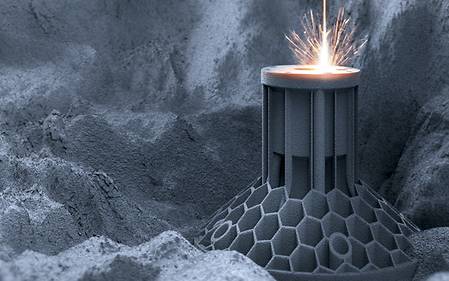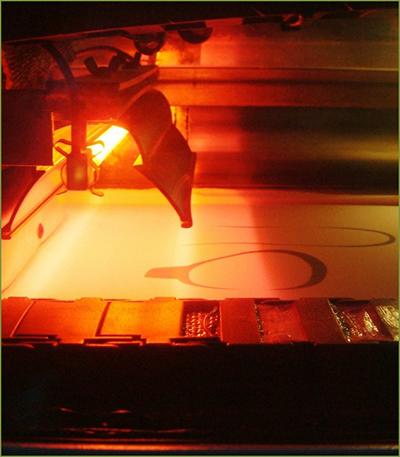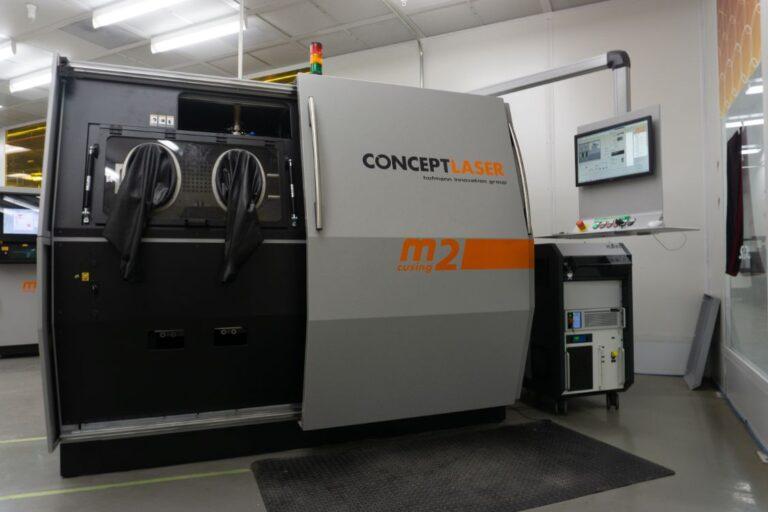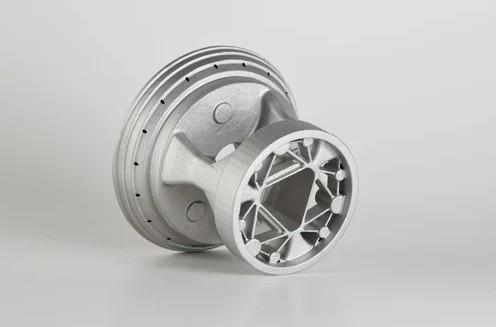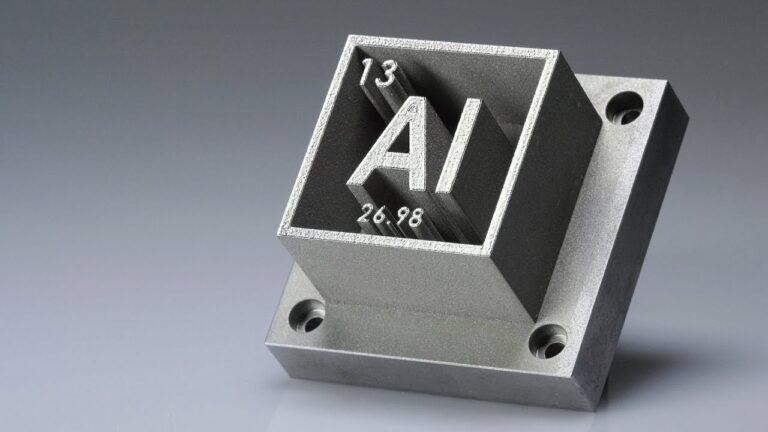The Comprehensive Guide to Laser Powder Bed Fusion Additive Manufacturing
Introduction
Laser Powder Bed Fusion (LPBF) has emerged as a game-changing technology in the world of additive manufacturing. It enables the creation of complex, high-quality parts with unprecedented precision and speed. In this complete guide, we explore the LPBF world. We discuss its history and key inventors. We also examine the principles behind its success.
LPBF’s origins date back to the 1990s. The first patents for SLS and SLM were filed then. Both techniques laid the groundwork for LPBF. These early pioneers laid the groundwork for what would eventually become LPBF. Over time, LPBF has evolved into a powerful manufacturing tool. This is due to advancements in laser technology. Improvements in materials science have also played a role. Engineering developments have contributed too.
One of the key figures in the development of LPBF is Dr. Carl Deckard, who, along with his advisor Dr. Joe Beaman, developed the SLS process at the University of Texas at Austin. Their work has paved the way for numerous innovations in the field of additive manufacturing, including LPBF.
In the following sections, we will explore the fundamentals of LPBF, including the process parameters, materials, and equipment involved. We will also examine its various applications across industries, from aerospace to medical, and discuss the advantages and limitations of the technology. Furthermore, we will cover post-processing techniques and quality control measures that ensure the production of high-quality parts.
Join us as we embark on this in-depth journey into the world of Laser Powder Bed Fusion additive manufacturing, and discover how this revolutionary technology is reshaping the future of manufacturing.
A brief overview of additive manufacturing
A Brief Overview of Additive Manufacturing
Additive manufacturing, often referred to as 3D printing, has transformed the way we approach production and design. This technology allows for the layer-by-layer creation of three-dimensional objects from digital models. In contrast to traditional manufacturing methods, such as subtractive or formative processes, additive manufacturing enables the production of highly intricate parts with minimal waste.
Additive manufacturing started in the 1980s. Chuck Hull invented stereolithography (SLA). Dr. Carl Deckard and Dr. Joe Beaman developed selective laser sintering (SLS). Early innovations laid the foundation for various techniques. Laser Powder Bed Fusion (LPBF) is one of them. We will discuss LPBF in this guide.
There are several additive manufacturing technologies available, each with its unique advantages and applications. Some of the most common techniques include Fused Deposition Modeling (FDM), SLA, SLS, and LPBF. FDM uses thermoplastic filament to build parts layer by layer, while SLA employs ultraviolet light to solidify liquid resin. SLS and LPBF, on the other hand, rely on high-powered lasers to sinter or melt powdered material, respectively.
Among these technologies, LPBF stands out for its ability to produce highly detailed, strong, and lightweight metal components. This makes it an ideal choice for industries requiring precision and durability, such as aerospace, automotive, and medical sectors. Moreover, its potential for reducing material waste and streamlining production processes has made LPBF increasingly popular in recent years.
In the upcoming sections, we will dive deeper into the Laser Powder Bed Fusion additive manufacturing process and explore its numerous applications, benefits, and challenges. Join us as we uncover the remarkable potential of this cutting-edge technology.
Importance of Laser Powder Bed Fusion (LPBF) in the additive manufacturing landscape
Laser Powder Bed Fusion (LPBF) has emerged as a vital player in the additive manufacturing ecosystem. This innovative technology offers a range of benefits that set it apart from other 3D printing methods, which we will discuss in the following paragraphs.
First, LPBF produces complex, detailed components. Traditional manufacturing struggles with these parts. The layer-by-layer approach enables intricate geometries. It also allows internal structures and lattice designs. These features improve performance and functionality. Consequently, LPBF is an attractive option for industries that demand precision and customization, such as aerospace, automotive, and medical sectors.
Secondly, LPBF boasts exceptional material properties, especially when working with metal alloys. The high-powered laser used in the process results in fully dense, strong, and lightweight parts with minimal porosity. This is a significant advantage for applications that require high strength-to-weight ratios or corrosion resistance, making LPBF a preferred choice for many manufacturers.
Next, LPBF has the potential to reduce waste and save on material costs. In contrast to subtractive manufacturing, LPBF uses only the needed powder. Excess material isn’t discarded. This resource efficiency reduces waste. It also promotes sustainable and eco-friendly production.
Additionally, LPBF can shorten production times by eliminating the need for tooling or molds. The digital design-to-production workflow allows for rapid prototyping and manufacturing, enabling companies to bring products to market faster. This increased speed and agility give businesses a competitive edge in fast-paced industries.
Finally, LPBF promotes innovation by encouraging the exploration of new materials, designs, and applications. Researchers and engineers can experiment with various metal alloys, composites, and even biocompatible materials, unlocking novel opportunities for technological advancement.
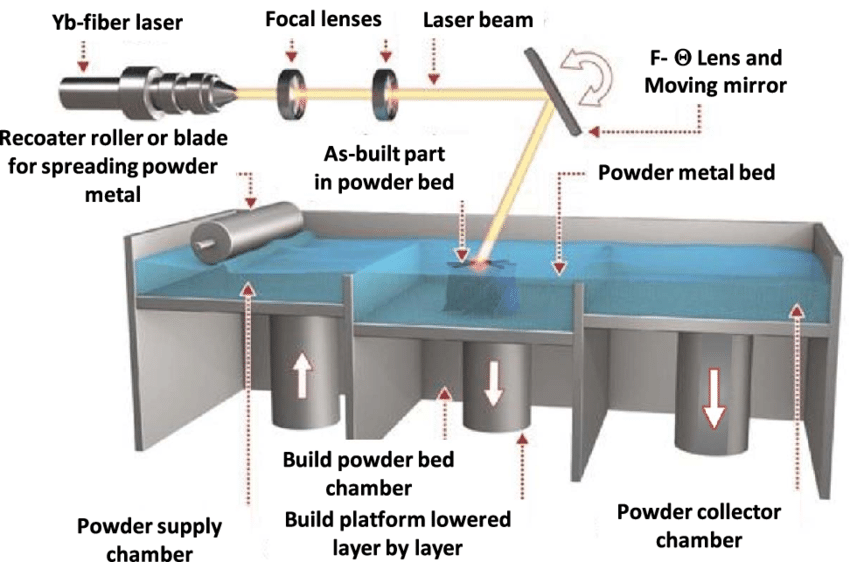
Fundamentals of Laser Powder Bed Fusion Additive Manufacturing
LPBF is an advanced technique. It uses a high-powered laser. The laser melts and fuses metal powders. This creates solid parts. Objects are built layer by layer. It allows for intricate geometries. Traditional methods cannot achieve this.
Basic principles of the LPBF process
The LPBF process begins with a thin layer of metal powder being spread evenly across the build platform. A high-powered laser then scans the powder, following a predetermined pattern based on the digital 3D model. The laser’s heat melts the powder particles, fusing them together to form a solid layer. Once a layer is complete, the build platform descends, and a new layer of powder is spread. This cycle repeats until the part is fully built. After the process, the excess powder is removed, and the part may require post-processing, such as support removal or surface finishing.
Key components of LPBF machines
LPBF machines consist of several critical components. The laser system, which includes the laser source, beam delivery, and focusing optics, is responsible for generating and directing the high-powered laser beam onto the powder bed. The build platform holds the part during the process and moves vertically as each layer is completed. The powder delivery system, which typically includes a powder hopper and recoating mechanism, ensures a consistent and uniform layer of powder is spread across the build platform. Additionally, the machine’s control system manages the overall process, including the laser scanning pattern and build platform movement.
Types of materials used in LPBF
LPBF is compatible with a wide range of materials, including metals, metal alloys, and some ceramics. Commonly used metals include aluminum, titanium, stainless steel, and nickel-based alloys. These materials offer a combination of high strength, lightweight properties, and corrosion resistance, making them suitable for various applications in industries like aerospace, automotive, and medical. The choice of material depends on the desired properties and performance requirements of the finished part.
In conclusion, the Laser Powder Bed Fusion process is a sophisticated additive manufacturing technique that relies on the careful coordination of lasers, build platforms, and powder delivery systems. Its compatibility with various materials and ability to create complex structures make it a valuable tool in the manufacturing landscape.
Process Parameters and Optimization
Process Parameters and Optimization
Understanding and optimizing process parameters are crucial for achieving high-quality parts in Laser Powder Bed Fusion (LPBF). This section will discuss the impact of laser characteristics, powder properties, layer thickness, and strategies for process optimization.
Laser characteristics and their effects on the process
The laser’s power, wavelength, and spot size significantly influence the LPBF process. Higher power levels can increase the melting efficiency and reduce build times but may also introduce defects like porosity or thermal stresses. Conversely, lower power levels can improve surface finish but may require slower scan speeds. Laser wavelength affects material absorption, with shorter wavelengths typically offering better absorption rates. Finally, the laser spot size influences the resolution and melting efficiency; smaller spots can produce finer details but may require more laser passes.
Powder characteristics and their impact on part quality
Powder properties, such as particle size, shape, and distribution, play a critical role in LPBF part quality. Smaller particles typically provide better flowability and packing density, leading to improved surface finish and mechanical properties. However, they can also increase the risk of oxidation and contamination. Particle shape affects powder flow and packing behavior, with spherical particles generally providing the best performance. Uniform particle size distribution is essential for consistent layer thickness and part quality.
Layer thickness and its influence on resolution and build time
Layer thickness affects the LPBF process’s resolution, build time, and mechanical properties. Thinner layers can achieve higher resolution and better surface finish but may increase the build time and require more laser passes. Thicker layers can reduce build time but may compromise part quality and dimensional accuracy. Therefore, selecting the optimal layer thickness depends on the balance between quality requirements and production efficiency.
Strategies for optimizing process parameters
Optimizing LPBF process parameters involves a combination of experimental and computational approaches. Design of Experiments (DOE) can be used to identify critical process parameters and their interactions. Computational modeling and simulation can help predict process outcomes and identify optimal parameter settings. Additionally, monitoring systems can provide real-time feedback during the build process, enabling adjustments and improvements in subsequent builds.
In conclusion, understanding and optimizing the process parameters in LPBF are essential for achieving high-quality parts. By considering the effects of laser characteristics, powder properties, and layer thickness, manufacturers can make informed decisions and implement effective strategies to optimize their LPBF processes.
Applications of Laser Powder Bed Fusion Additive Manufacturing
Laser Powder Bed Fusion (LPBF) has become increasingly popular in various industries due to its versatility and ability to produce complex parts with high precision. In this section, we will explore its applications in aerospace, automotive, medical and dental, jewelry and art, and research and development.
Aerospace industry
In the aerospace sector, LPBF plays a vital role in manufacturing lightweight, high-strength components. For example, GE Aviation utilizes LPBF to produce fuel nozzles for its LEAP engines, which are lighter and more fuel-efficient than traditional designs. The ability to create intricate geometries and optimize topology helps reduce weight without compromising performance, making LPBF ideal for aircraft components.
Automotive industry
The automotive industry also benefits from LPBF’s capabilities. By producing complex, lightweight parts, manufacturers can improve fuel efficiency and reduce emissions. BMW, for instance, uses LPBF to create water pump wheels with optimized designs, enhancing engine cooling and reducing overall weight.
Medical and dental industries
LPBF’s precision and biocompatibility make it well-suited for medical and dental applications. Custom implants, prosthetics, and surgical instruments can be manufactured to fit individual patients’ needs. An example is Stryker’s Tritanium spinal implants, which are produced using LPBF, offering a porous structure that promotes bone in-growth and fusion.
Jewelry and art
The jewelry and art industries take advantage of LPBF’s ability to create intricate designs and unique geometries. Artists can produce one-of-a-kind pieces with high levels of detail and personalization. For example, Cooksongold utilizes LPBF to create custom jewelry designs with complex patterns and structures that would be difficult to achieve using traditional methods.
Research and development
LPBF is a valuable tool in research and development, enabling the rapid prototyping and testing of new designs and materials. Researchers can explore novel geometries, material combinations, and process parameters, pushing the boundaries of traditional manufacturing. An example is NASA’s successful testing of an LPBF-produced rocket engine injector, demonstrating the potential for more efficient and cost-effective space exploration.
In conclusion, LPBF’s versatility and precision have led to its widespread adoption in various industries. From aerospace to art, this additive manufacturing technique offers significant advantages, including lightweight structures, complex geometries, and rapid prototyping, making it an essential tool in today’s manufacturing landscape.
Advantages and Limitations of LPBF
Laser Powder Bed Fusion (LPBF) is a widely-used additive manufacturing technique, offering several benefits and facing certain limitations. This section will discuss the advantages and drawbacks of LPBF and compare it to other additive manufacturing methods.
Benefits of using LPBF technology
One key advantage of LPBF is its ability to produce complex geometries, such as internal channels and lattice structures, which are difficult or impossible to create with traditional manufacturing methods. This allows for lighter, more efficient designs that optimize material usage. Additionally, LPBF offers high precision and accuracy, resulting in parts with excellent surface finish and mechanical properties.
LPBF also enables rapid prototyping, as it requires no tooling or molds. This allows for faster design iterations and reduces time-to-market for new products. Moreover, LPBF is well-suited for producing small batches of customized parts, making it ideal for industries requiring personalized components, such as medical and dental applications.
Challenges and drawbacks of the process
Despite its advantages, LPBF also faces some limitations. One major drawback is the high cost of equipment and materials, making it less accessible for small businesses and hobbyists. Additionally, the process can be slow, especially for large parts or those with high material density, resulting in longer production times compared to other methods.
Another challenge is the need for post-processing, including support removal and heat treatment, which can increase production time and cost. Moreover, LPBF is limited by the size of the build chamber, restricting the dimensions of the parts that can be produced.
Comparing LPBF to other additive manufacturing techniques
Compared to other additive manufacturing techniques, LPBF offers higher precision and better material properties. For example, while Fused Deposition Modeling (FDM) is more affordable and accessible, it typically results in parts with lower resolution, surface finish, and mechanical strength.
On the other hand, Stereolithography (SLA) offers high resolution and surface finish but is limited to photopolymer materials and may have lower mechanical properties compared to LPBF-produced parts. In contrast, LPBF can process a wider range of materials, including metals, which makes it suitable for industries with specific material requirements.
In conclusion, LPBF has notable advantages, including the ability to create complex geometries, high precision, and rapid prototyping. However, it also faces challenges such as high costs, slow production times, and post-processing requirements. When compared to other additive manufacturing techniques, LPBF stands out for its precision and material versatility, making it a valuable tool in various industries.
Post-Processing and Quality Control
After parts are produced using Laser Powder Bed Fusion (LPBF), they often require post-processing and quality control to ensure optimal performance and desired properties. This section will cover support structure removal, heat treatment, and stress relief, surface finishing techniques, and inspection and quality assurance methods.
Support structure removal
Support structures are essential during the LPBF process to prevent warping and distortion. Once the part is complete, these structures must be removed. This can be done using various techniques, such as wire cutting, milling, or grinding. Careful removal is crucial to avoid damaging the part and maintaining its dimensional accuracy.
Heat treatment and stress relief
To relieve internal stresses and improve mechanical properties, heat treatment is often necessary for LPBF-produced parts. Processes like annealing or hot isostatic pressing can help minimize the risk of cracking and distortion. The choice of heat treatment method depends on the material used and the desired final properties of the part.
Surface finishing techniques
Surface finishing is essential to enhance the appearance, functionality, and overall quality of LPBF-produced parts. Common techniques include abrasive blasting, polishing, and chemical etching. The choice of finishing method depends on the intended application and required surface roughness. For instance, medical implants may require smoother surfaces to minimize bacterial growth and improve biocompatibility.
Inspection and quality assurance methods
Ensuring high-quality parts is crucial in additive manufacturing, including LPBF. Inspection and quality assurance methods are employed to verify the accuracy, material properties, and overall performance of the parts. Non-destructive techniques, such as X-ray computed tomography and ultrasonic testing, can identify internal defects or porosity. Destructive methods, like tensile testing or hardness testing, can assess mechanical properties. These evaluations ensure that the final product meets the intended specifications and is suitable for its intended use.
In conclusion, post-processing and quality control play a vital role in achieving high-quality LPBF-produced parts. By carefully addressing support structure removal, heat treatment, surface finishing, and inspection, manufacturers can ensure that their products meet the desired specifications and performance requirements.
Future Trends and Developments
Laser Powder Bed Fusion (LPBF) technology continues to evolve, with many promising trends and developments on the horizon. This section will discuss new materials and their potential applications, advances in machine technology and process control, environmental and sustainability considerations, and integration with other manufacturing technologies.
New materials and their potential applications
Researchers are continually exploring new materials for use in LPBF processes. These materials can lead to innovative applications in various industries, such as aerospace, automotive, and medical. For example, new high-performance metal alloys can offer enhanced strength, corrosion resistance, or even tailored properties, allowing for the production of parts with improved performance and extended service life.
Advances in machine technology and process control
Machine technology and process control in LPBF are rapidly advancing, leading to improved precision, efficiency, and reliability. Developments like real-time monitoring systems, advanced sensors, and artificial intelligence-driven algorithms can help optimize the printing process, minimize defects, and reduce waste. These advances will contribute to the broader adoption of LPBF in industries where high-quality and consistent production is vital.
Environmental and sustainability considerations
As environmental concerns become more pressing, the sustainability of LPBF technology is gaining attention. Researchers are exploring ways to reduce energy consumption, recycle unused powder, and minimize waste generation. Additionally, the potential for producing lightweight, optimized parts can lead to reduced material usage and lower environmental impact across various industries.
Integration with other manufacturing technologies
The future of LPBF technology will likely involve its integration with other manufacturing techniques, both additive and traditional. Hybrid systems that combine LPBF with machining, welding, or even other additive manufacturing methods can provide new possibilities for part production. This integration can lead to more efficient and cost-effective manufacturing processes that leverage the advantages of each technique.
In conclusion, the future of LPBF technology holds exciting developments in materials, machine technology, process control, sustainability, and integration with other manufacturing methods. These trends will contribute to the ongoing growth and adoption of LPBF across various industries, enabling the production of innovative and high-quality parts.
Conclusion
This guide has provided a comprehensive overview of Laser Powder Bed Fusion (LPBF) technology, covering its applications, advantages, limitations, post-processing methods, and future trends. In this conclusion, we will recap the key points and discuss the future outlook for LPBF in additive manufacturing.
Recap of the key points covered in the guide
- Applications: LPBF technology has been successfully applied in various industries, including aerospace, automotive, medical and dental, jewelry and art, and research and development.
- Advantages and limitations: LPBF offers benefits such as design flexibility, material efficiency, and reduced lead times while facing challenges such as high costs, process complexities, and limitations in part size and geometry.
- Post-processing and quality control: Support structure removal, heat treatment, surface finishing, and inspection are essential for ensuring the quality and functionality of LPBF-produced parts.
- Future trends and developments: New materials, machine technology advancements, environmental considerations, and integration with other manufacturing technologies will shape the future of LPBF.
The future outlook for LPBF in additive manufacturing
As LPBF technology continues to evolve, it is expected to play an increasingly significant role in the additive manufacturing landscape. Developments in materials, machine technology, and process control will enable new applications and expand the adoption of LPBF in various industries. Furthermore, the integration of LPBF with other manufacturing methods will lead to more efficient and cost-effective production processes.
In conclusion, Laser Powder Bed Fusion technology is an essential tool in the additive manufacturing world, offering unique advantages and a wide range of applications. The ongoing developments and research in the field promise a bright future for LPBF, with the potential to revolutionize manufacturing across multiple industries.
How can LPBF be combined with traditional manufacturing methods to create hybrid production processes?
- Identify the production requirements
Assess the production requirements and constraints of the specific part, considering factors like material properties, geometric complexity, and required tolerances.
- Choose the appropriate LPBF and traditional manufacturing methods
Based on the requirements, select the most suitable LPBF and traditional manufacturing methods to be combined, such as CNC machining, casting, or injection molding.
- Optimize the part design
Modify the part design to take advantage of both LPBF and traditional manufacturing capabilities, focusing on aspects like weight reduction, functional integration, and process compatibility.
- Plan the hybrid production workflow
Develop a detailed plan for the hybrid production process, outlining the sequence of manufacturing steps, the use of different equipment, and the transfer of parts between processes.
- Implement the hybrid production process
Execute the hybrid production process according to the plan, ensuring that the LPBF and traditional manufacturing methods are integrated seamlessly and that the required quality and efficiency standards are maintained.
- Monitor and control the process
Continuously monitor the hybrid production process, identifying and addressing any issues or deviations from the plan, and adjusting the process parameters as needed to maintain optimal performance.
- Evaluate the results
Assess the performance and outcomes of the hybrid production process, comparing them to the initial requirements and objectives, and identifying areas for improvement or optimization.
- Refine the hybrid production process
Apply the insights gained from the evaluation to refine and optimize the hybrid production process, enhancing its efficiency, quality, and overall effectiveness.
FAQs
LPBF can process a wide range of materials, including metals (such as titanium, stainless steel, and aluminum), alloys, and even ceramics and polymers. The choice of material depends on the application requirements, such as mechanical properties, corrosion resistance, and thermal conductivity.
LPBF achieves high accuracy and precision through the use of fine powder particles, precise control of the laser, and advanced software algorithms that optimize the process parameters. The process can produce complex geometries and intricate details, with tolerances typically in the range of ±0.1 mm.
LPBF offers several sustainability benefits, such as reduced material waste, lower energy consumption, and the ability to create lightweight, optimized parts. However, it is essential to consider factors like recycling of unused powder, proper disposal of waste material, and the overall life cycle impact of the parts produced.
To determine if LPBF is suitable for your application, consider factors such as part complexity, material requirements, production volume, and cost constraints. Consulting with experts in additive manufacturing and evaluating case studies or examples from similar industries can also help inform your decision.
Quality control in LPBF involves several steps, including inspection of raw material powder, in-process monitoring (e.g., using sensors to track temperature, laser power, and build environment), and post-processing inspections. Techniques like X-ray computed tomography, scanning electron microscopy, and mechanical testing can be used to assess the quality and integrity of the final parts.

